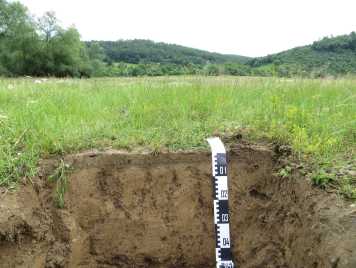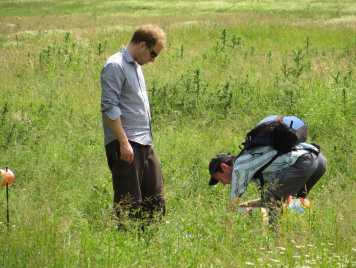Newly published paper examines the effect of extreme metal(loid) concentrations on prokaryotic community structure in floodplain soils contaminated with mine waste
Michael Simmler (a Soil Chemistry alumnus who recently defended his doctoral thesis), Iso Christl and Ruben Kretzschmar have authored the new paper, which has been published in Applied Soil Ecology.

Many river floodplains have been contaminated with mine wastes containing potentially hazardous metal(loid)s. To what extent such legacy contamination affects the diversity and structure of the soil microbial communities is unclear. In this study, we used 16S rRNA gene amplicon sequencing to investigate the prokaryotic microbiomes (bacteria and archaea) in the Ogosta river floodplain, which is contaminated because of historic mining and a tailings dam failure in 1964. We established a 700 m long soil transect exhibiting extreme contamination gradients particularly reflected in arsenic levels, ranging from <50 mg to >10 g per kg soil. Boosted regression trees analysis suggested that microbial biomass (soil DNA as proxy) and prokaryotic taxonomic and phylogenetic richness were mainly determined by the availability of limiting nutrients, first of all organic C, but were also positively related to the contamination. Taxonomic evenness was evidenced to be mainly determined by the contamination level, with more strongly contaminated soils harboring more even communities. Soil pH was indicated to play an important role in community shifts between the soils (β-diversity). Functional profiling through hidden state prediction (HSP) evidenced that relative numbers of metal(loid) resistance and antioxidant defense genes were positively related to the level of contamination and tended to co-occur in the inferred genomes. Our results contrast the common prediction of decreased microbial biomass and diversity because of metal(loid) contamination. We suggest that in our study the net increase in prokaryotic community richness and evenness is related to mild toxicity diminishing competitive advantages of dominating OTUs, allowing other OTUs to thrive which were competitively excluded.
